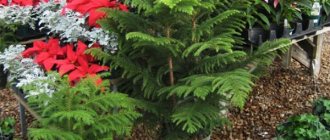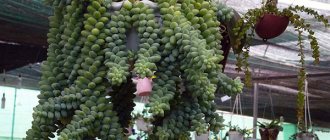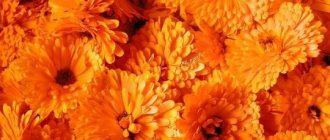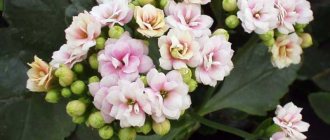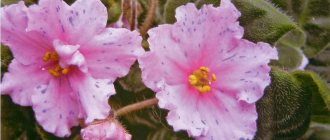In spring, it is one of the very first to bloom, unobtrusively and harmoniously fitting into the overall picture of the awakening garden. Lungwort is a modest and graceful primrose with intricately colored flowers and leaves, a plant from that small percentage of medicinal herbs whose healing effects do not remain outside the pharmacopoeial framework of official medicine. Everyone who has ever walked in the spring forest of central Russia knows what lungwort looks like. How and why to grow it on the plot will be of interest to those who care about their health and, when choosing plants for their plot, prefer to combine the beauty and benefits of flowering crops.
Description of the plant and photo
Lungwort or pulmonaria is a perennial rhizomatous crop from the Borachnikov family. Forms low clumps due to a dense basal rosette of large oblong long-petioled leaves. The color of the leaf blades often has a spotted silver pattern. It is widespread from the Caucasus to Siberia, throughout Western and Eastern Europe, and grows in the northern regions of Central Asia. The leaves of most species have short but dense pubescence.
Flowering is early, in spring, sometimes at the beginning of summer, lasting about a month. Flower buds are formed in the apical part of the shoots in paired curls. In the wild, the flowers are small, usually not exceeding 1 cm in diameter; in varietal varieties they are 2 times larger. Their characteristic feature is the change in color of the petals as they are pollinated. From pale pink and bluish hues at the beginning of flowering, they gradually become lilac, deep blue or violet.
The plant is a valuable honey plant; the tubular flower corolla contains a high-quality portion of fragrant nectar. This is the reason for all its numerous popular names, which are based on the word “honey”.
Botanical description
Lungworts are herbaceous perennials from 8 to 50 cm in height with a branched, horizontally located rhizome. The string-like, fleshy, fragile roots of lungworts are very easy to damage, and they recover slowly. Numerous large long-petioled basal leaves of the plant form a rosette. The shape of the entire leaves, pointed at the apex, depending on the species, can vary from linear-lanceolate to broadly lanceolate. There are significantly fewer stem leaves than basal leaves, they are small and sessile. Leafy, erect, often pubescent peduncles are formed before the basal leaves begin to grow.
In the photo: Growing lungwort in a flowerbed
White, pink, lilac, blue or blue lungwort flowers have a double perianth, a bell-shaped five-toothed calyx and a funnel-shaped five-lobed corolla with a tube and an open throat from which five hair tufts grow. The flowers are collected in apical inflorescences-curls. A characteristic feature of representatives of the genus Lungwort is that the color of the buds and flowers of one plant is not the same: a pink bud can open into a blue, purple, light blue or white flower, and there are often bushes that can simultaneously have flowers of different colors. This phenomenon is explained by a gradual change in the acidity level of the cell sap in the corollas: juice with an acidic reaction turns the corolla pink, and with an alkaline reaction it turns blue and blue. Lungworts bloom in the spring.
Secrets of growing bluebells in the garden
Plants are pollinated by insects with long proboscis, such as bumblebees. The fruit of the lungwort is a nut that, when ripe, splits into four single-seeded lobes with fleshy aneurysms that attract ants.
- How to sow lobelia seedlings in peat tablets
Description of lungwort varieties with photos
The description of the lungwort genus includes 18 plant species, but in practice this division is often conditional due to the high cross-pollination of the crop and the mixed habitat of their growth. Due to the fact that the plant is not often found in pure species forms, there are contradictions in this classification; the opinions of biologists regarding their number are divided. Let's list the most popular ones.
Red lungwort
In spring, this variety is one of the first to bloom, blooming bright red buds. The rhizome is elongated, prone to rapid growth. Each bush can take root within a radius of up to 1 m around itself, due to which dense clumps will soon form in the place where the red lungwort is planted. The height of the shoots is up to 30 cm. The leaves are narrow, evenly colored in a light green tone. In central Russia it is cultivated without shelter; in Siberia and other regions of cold climate zones, insulating mulching is required in winter.
Vague or Dark
This variety is most often found in Eastern Europe. Forms dark green herbaceous cushions up to 30 cm high. Shoots are slightly ribbed, rigidly pubescent. The sheet plates also have the same hard pile. It blooms simultaneously in three different colors on one bush - pink, sky blue and purple.
Lungwort
A heat-loving variety that is rarely found in Russia. It has a spectacular appearance due to decorative foliage with a light green background painted with silver patterns. The bright pattern of lanceolate leaves is well expressed in spring, and by mid-summer it smooths out into an almost even silvery background. Elongated peduncles up to 45 cm carry purple-red inflorescences high above the leafy crown.
Lungwort officinalis
A common species with the most pronounced medicinal properties and widespread use in folk and official medicine. Widely distributed throughout Western Europe and Russia. The bushes are low, no more than 30 cm, with dark green foliage strewn with light spots. The leaf blades are covered with short, hard hair. The inflorescences gradually change their color from dark red to rich purple.
Lungwort longifolia
A low-growing species no more than 20-25 cm in height, it is distinguished by elongated leaves with a characteristic pattern: silver spots are spread along the front side of the leaf against a grassy green background. The underside of the leaf is plain, muted green.
The softest lungwort
It is found in the foothills and mountain valleys of the Caucasus, as well as in Siberia. The tallest variety, reaching half a meter in height. It blooms with blue-violet and bright purple buds, the leaves are uniform, light green in color, with short pubescence.
Sugar or spotted
A low-growing, evergreen ground cover that tends to grow rapidly and form a dense cover on the ground. Blooms profusely, starting in purplish-red flowers and gradually changing color to lilac and then deep purple.
When planting lungwort, you should remember that it is actively growing in breadth and encroaching on the territory of its neighbors. A curb tape dug into the ground or other physical obstacles buried to a depth of 30-40 centimeters will help limit its spread.
Nuances of shades
Thanks to natural diversity and the work of breeders, many beautiful varieties have appeared.
These include lungworts, which are significantly superior to wild plants in brightness and abundance of flowering, and decorative leaf varieties of truly unprecedented beauty for our latitudes. Both directions of selection are magically combined in new products of recent decades. The spectacularly colored leaves of some lungworts resemble the bright outfit of the inhabitants of tropical greenhouses - begonias, aglaonemas or dieffenbachias. They primarily attract those who, to save energy, choose plants that are interesting throughout the season. And if decorative-leaved varieties also bloom spectacularly, it’s doubly lucky. Words, alas, give only a general idea of the varieties. Take, for example, the silvery “splashes” on the leaves! There are many nuances in this one formula! There are many nuances in this one formula!
The spots can be large or small, on a light green or dark background. They can almost merge with each other, turning into a solid silver tone, have a marbled pattern, or resemble a scattering of pearls and stars in the night sky. The contrasts of silver and dark green in the edging of the leaves are magnificent.
It is also difficult to clearly imagine the varietal differences in flower color from the description. Even a photographic portrait does not provide complete clarity, since it reflects only a moment, while the shades change at different stages of flower blooming. In addition, the appearance of the lungwort largely depends on the climate and local conditions. Another unpleasant nuance is the presence on the market of plants unfairly propagated by seeds that do not retain the characteristics of the original variety.
The appearance of the lungwort largely depends on the climate and local conditions.
The most popular varieties of lungwort are about three dozen . Among them there are long-lived varieties and new products of recent decades.
The nursery Terra Nova (USA), famous for its impressive contribution to expanding the range of ornamental perennials, included lungwort in its area of interest Since the 90s of the last century, he has brought into the arena more than 20 new products representing the genus of lungworts. Special efforts were aimed at overcoming the shortcomings of old varieties. As a result, Terra Nova lungworts are characterized by increased resistance to powdery mildew and the preservation of highly decorative leaves throughout the season.
As a result, Terra Nova lungworts are characterized by increased resistance to powdery mildew
You can find a large assortment of different varieties and hybrids of lungwort in our catalog, which combines the offers of many large garden online stores. View a selection of lungwort seeds and seedlings.
Hybrid lungwort Victorian brooch 440 RUR
vsesorta.ru
Hybrid lungwort Samourai 360 RUR
vsesorta.ru
Hybrid lungwort Opal 400 RUR
vsesorta.ru
Hybrid lungwort Margery Fish 440 RUR
vsesorta.ru
Choosing a lungwort variety based on reviews from experienced gardeners
The main characteristic that you need to pay attention to when purchasing seeds or seedlings is the regionalization of the variety. Factory varieties of lungwort indicate this in the description. Zoned lines grow better, bloom more profusely and suffer less disease. Unfortunately, many people make their choice based on photos; however, reality does not always meet expectations, especially when seedlings are purchased from private traders. And the point is not in deliberate deception, but, as mentioned above, in the strong cross-pollination of varieties and the unpredictability of the result. For plants with an open root system, it is important that the roots do not dry out. If seedlings are sold in containers, it is advisable to check the roots for rot.
Planting a plant
Lungwort prefers loose soils rich in humus. Sandy loam or loamy soils are good. For a flower garden, choose a place where there is no direct sunlight, because it is in the shade that the lungwort blooms brighter, and the patterns on the leaves become clearer.
The optimal time for planting is spring. During this period, the soil is most saturated with nutrients, and the absence of frost allows the young plant to adapt to the new environment.
Plant lungwort in a sunny place, and it will delight you with bright, lush blooms
Lungwort does not tolerate stagnant water, so it is very important that the area is well drained. Also, keep the area well clear of weeds.
Attention. Do not bury the lungwort when planting.
Planting in open ground
When choosing a site for planting, you should be guided by the fact that in nature lungwort grows in wooded areas under the canopy of trees, so it is better to plant it in the shady corners of the site. Even full shadow will not be critical for her. In places exposed to the sun, only one variety will feel comfortable - the softest lungwort. At the same time, the plant does not like waterlogged soils, so in places where the ground is low, it is better to make a small embankment and arrange a drainage layer for planting. The plant is not picky about soil, but in nature it is more often found and looks better on fertile loam or sandy loam areas with alkaline or slightly acidic pH values.
Too bright lighting causes the foliage of the lungwort to lose color, its pattern is smoothed out, and the color becomes faded.
When to plant - spring or autumn?
According to reviews from flower growers, spring planting gives better results, but sowing seeds in winter is also acceptable.
Requirements for soil and planting site
Lungwort requires rather specific growing conditions. In nature, it inhabits damp thickets and deciduous forests, so it expects the same conditions in the garden and prefers semi-shaded positions. Then its growth is harmonious, flowering is abundant, and it does not cause problems with care. In spring, the plant loves the sun, and in summer, when it loses flowers, it feels better in the shade. The heat can cause the leaves to fade and even dry out. Therefore, it is better to plant it under trees and shrubs, the crowns of which allow light to pass through in the spring and protect them from the scorching rays of the sun in the summer.
They can grow well in the shade, but then the flowering will be weaker. In places with strong sunlight, plants are susceptible to burns, dry out, and grow poorly.
The soil for lungwort should be:
- fertile;
- humus, rich in humus;
- permeable;
- The pH of the substrate should be 5.6-6.8;
- wet.
It cannot be planted in wetlands, and it does not tolerate drought. In hot, dry summers without watering, it may dry out prematurely, going into summer dormancy.
To improve the structure of the substrate, it is recommended to use well-rotted compost or other organic fertilizer.
It is worth making sure that the shaded area is well ventilated. If there is excessive humidity and stuffiness, lungwort can become a victim of powdery mildew or gray rot.
Lungwort care
Lungwort does not have any fundamental differences from traditional agricultural technology for flowering herbs. When grown on fertile garden soil, a single annual application of complex mineral fertilizer is sufficient, preferably in early summer. Organic matter can be added to the soil in the spring, avoiding direct contact with plant stems, which can be difficult with high planting densities. A good solution would be to distribute organic matter around the perimeter of the site in a shallow ditch.
Watering
The culture prefers moist places without swamps, so if there is regular rainfall, it usually does not require watering. A layer of mulch, such as wood chips, sawdust, pine needles, last year's dry leaves, and mature compost, will help retain moisture in dry summers.
Trimming
Every year, the above-ground part of the plant dies and grows again, but in winter it is better not to touch it to avoid freezing of the roots. It is better to prune last year's shoots in the spring after the snow melts. In this case, they need to be cut off, and not try to break them out, since this easily damages the growing point. As for the inflorescences, they must be cut off immediately as they wilt; this will eliminate cross-pollination and self-seeding and save strength for further growth.
Growing and care
Lungworts are easy to grow and do not require extensive care. Unlike many other groundcovers, lungwort is not expansive and does not threaten species growing nearby.
Lungwort care includes:
- Watering . Young plants and adults should be watered in case of prolonged drought. As perennials age, they will require less and less watering. The plant does not like dry soil and stagnant water.
- Mulching. To limit the evaporation of water from the substrate, apply a layer of mulch - bark, sawdust. Plants planted in sunny beds should be mulched thickly to prevent water loss. In addition to conserving moisture, this will limit weed growth.
- Feeding . To fertilize lungwort, it is recommended to use organic fertilizers (compost, manure). It is not recommended to feed lungwort with mineral fertilizers.
- Trimming. In June, when the flowers dry out, you need to trim them immediately; this will improve the appearance of the bush and save the energy it will spend on setting seeds. We also remove any dried, sun-baked leaves - they will grow back in a few weeks. It is possible that the bush will bloom again.
- Autumn care . In late autumn, we cut off the above-ground part of the lungwort at a height of 10 cm so that it does not serve as a breeding ground for pests and diseases. There is no need to additionally cover the plants; they are frost-resistant. It will withstand even severe frosts on a bed under snow cover. However, it is better to cover recently planted plants or tender varieties with pine branches for the winter, which will protect against too large temperature changes. The plant does not tolerate sudden changes in temperature.
- Rejuvenation . Over time, plants may develop smaller leaves and bloom less abundantly. This is a sign that they should be divided (rejuvenated) and transplanted to another place.
- Diseases, pests . Diseases on lungwort can develop gray rot and powdery mildew, in which case it is necessary to treat with fungicides. The plant can be attacked by pests - honey aphids, slugs and snails. Aphids can be washed off with water or soapy water; in case of large infestations, insecticides are used. You should use traps for slugs.
How to get rid of slugs can be found in our article
Reproduction of lungwort
Propagating the crop is very easy even for a novice gardener. It is recommended to use available vegetative methods for this, since self-collected lungwort seeds do not retain varietal characteristics. In addition, this is a long process, in which it will be possible to wait for flowering only in the third year.
Dividing the bush
Any variety of lungwort can be propagated by bush division, including hybrid varieties, since the method preserves all the botanical characteristics of the mother plant. Long roots can be trimmed. It is undesirable to make too small divisions; in this case, it will take a long time to restore the decorative appearance of the planting. The optimal lifespan of a bush for dividing it is every 3-4 years.
Rhizome pieces
This method of propagation is not available for all species, but only for the shaft-shaped, long-leaved, red, and medicinal lungwort. They start it in the fall, digging up the rhizome and cutting it in such a way that each part is provided with a bud. After treating the cuts with charcoal or activated carbon, the rhizome sections are immediately planted in the soil with a depth of 3-4 cm. At first, abundant watering is carried out, which should be stopped by winter, since the roots saturated with moisture freeze more easily.
The benefits of lungwort honey
Many beekeepers show great love for lungwort. And there are several reasons for this. It blooms in the spring, or more specifically, in mid-April, and is one of the early honey plants. The flowering period of the plant is about a month, during which a huge amount of nectar is released. The flowers of this plant themselves are very loved by bees.
The honey that is collected from the lungwort is an incredibly valuable product for the bees themselves and the entire bee family. It is during honey collection that the queens lay eggs very actively. And at this time, worker bees replenish lost strength and food reserves.
For buyers, lungwort honey is also a very valuable product, as it helps strengthen the body and helps get rid of coughs and colds. But with all the positive qualities of this product, you should approach its use with great caution. This is because honey with lungwort can provoke severe irritation of the mucous membranes in the mouth.
People who are allergic to this product should also not consume honey.
Properties of lungwort and rules of use
One of the popular names of the plant is lungwort, which indicates its widespread use as a medicine for the treatment of the respiratory system. It is used as an expectorant, emollient, and anti-asthmatic agent; it is used to treat inflammation, hoarseness, acute and chronic bronchitis, and even tuberculosis, including in children. But the main rule for using lungwort, like any other medicinal plants, is to do no harm! You can use herbal infusions, dried powder, decoction or juice for medicinal purposes only after consulting a doctor, despite the fact that lungwort has no direct contraindications.
The raw material is harvested during flowering, after which it is dried in the shade, preventing complete blackening.
Lungwort in garden design and its flower garden partners
The plant looks great in the company of ferns, hostas, lilies of the valley or lilies of the valley in a semi-shaded corner of the garden, creating a feeling of forest coolness.
The foliage of lungworts is decorative until the coldest weather, so the plant is used to decorate borders and alpine hills; varieties with pubescent silvery leaves covered with intricate patterns look especially amazing.
The perennial is often used to decorate the area around the trunk of tall trees; it especially likes the proximity of oak trees.
The early flowering of lungwort, when there is still no greenery on the branches, brings cheerful revitalization to the garden waking up after hibernation and fills the air space with the sweet aroma of nectar, attracting the first insects.
What about pests?
Many gardeners note the flower’s intransigence to plant diseases. And many garden pests avoid lungwort. The only thing gardeners should be wary of is attacks from slugs and snails, which happily eat lungwort leaves.
Uninvited guests appear when the soil is waterlogged. Therefore, after heavy rains or inaccurate watering, be prepared to fight slugs or snails.
Experienced flower growers advise combating these pests using agrotechnical methods rather than chemical ones. That is:
- loosening the soil;
- timely removal of weeds;
- timely pruning of overgrown plant elements so that they do not attract slugs and snails.
Trimming
Lungwort pruning is carried out once during the flowering season, and this procedure is aesthetic and useful. First of all, peduncles that have grown abundantly are cut off. They are cut off at the root so that not even stumps remain. And they always do this with a sharp knife or pruning shears. By breaking parts of the lungwort with your hands, you can damage other stems and leaves, or even uproot the plant.
It is also necessary to regularly inspect the plant for dry leaves. They should be periodically cut off and thrown away.
Watering and mulching
Photos of garden lungwort (planting and care are discussed below), shared by gardeners, show the result of proper care. One of its conditions is watering. It should not be frequent, especially if the planting site retains moisture well. Moisturizing action should be carried out when the soil shows obvious signs of drought.
When the soil needs liquid, this also affects the condition of the lungwort. Especially on the “red” variety. It is more susceptible to lack of moisture: the leaves lose their elasticity, sag and become withered.
In early spring, seedlings just planted in open ground and already mature plants need mulching. This measure is necessary to protect the plant from drying out, overheating, pests and diseases.
Sawdust, mown grass (hay), peat, and wood chips can be used as mulch. The mulching procedure is desirable, but not required.
Sugar lungwort as a traditional medicine
Lungwort contains a large amount of vitamins, macro- and microelements, carotene, etc., which is why lungwort is widely used in folk medicine. As medicinal elements, lungwort buds, leaves, and rhizomes of the plant are collected, which are thoroughly dried. Proper drying of flowers takes place in a room that is well ventilated and dried at a temperature of forty degrees Celsius. To preserve all the beneficial properties of dried lungwort fruits, it should be stored in paper or fabric bags. The most useful are decoctions and infusions of sugar lungwort; they have a diuretic effect, prevent coughing, heal wounds well and relieve inflammation. Sugar lungwort is used to treat:
- bronchitis and bronchial asthma;
- tuberculosis;
- pneumonia;
- laryngitis;
- inflammation of the genitourinary system, and many other diseases.

